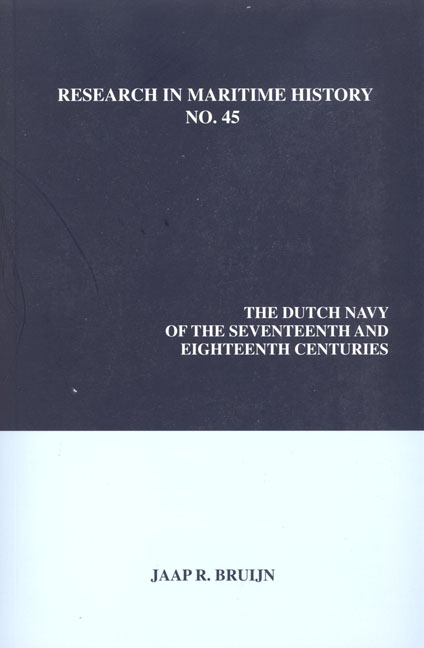Book contents
- Frontmatter
- Contents
- Illustrations
- Tables
- Series Editor's Foreword
- About the Author
- Introduction to the 2011 Edition
- Foreword
- Preface
- Introduction
- Map of the Dutch Republic
- Map of Dutch Naval Activity in European Waters
- Part One The “Old” Navy, Late 1500s-1652
- Part Two The “New” Navy, 1652-1713
- Part Three A Second-Rate Navy, 1714-1795
- In Retrospect
- Bibliography
- Index
Introduction
- Frontmatter
- Contents
- Illustrations
- Tables
- Series Editor's Foreword
- About the Author
- Introduction to the 2011 Edition
- Foreword
- Preface
- Introduction
- Map of the Dutch Republic
- Map of Dutch Naval Activity in European Waters
- Part One The “Old” Navy, Late 1500s-1652
- Part Two The “New” Navy, 1652-1713
- Part Three A Second-Rate Navy, 1714-1795
- In Retrospect
- Bibliography
- Index
Summary
During the Middle Ages a number of territories within the boundaries of the modern Netherlands, Belgium and northern France each developed similar ruling institutions in the form of local parliaments or states. In the fifteenth century, the dukes of Burgundy succeeded in joining most of these territories together under a single ruler, but the tradition of provincial autonomy remained strong. At long last, the Habsburg emperor Charles V (who reigned 1515-1555) ruled all the territories, seventeen in number. The seat of the central government was established at Brussels, with the rights of the provincial institutions being largely oppressed in favour of the Brussels’ court. From 1556 onwards, however, Charles V's son and successor, King Philip II of Spain, and his governors rekindled the old spirit of provincial opposition against centralized rule by pursuing fierce religious and fiscal policies. The Protestant iconoclasm of 1566 shook the foundations of their power and caused Philip to install the Duke of Alba as his military governor. Alba's high-handed and arbitrary rule subsequently provoked the Dutch revolt. In 1572, after some initial disturbances, the provincial ruling States of Holland and Zeeland, under the leadership of William of Orange (the Silent), launched a revolt against Alba that soon gained the support of other provinces. A long and fierce struggle ensued, finally to result in the birth of the Republic of the Seven United Provinces, comprising Holland, Zeeland and the five other northern provinces of Utrecht, Gelderland, Overijssel, Groningen and Friesland. The kingdoms of France as well as of England each had their own interest in helping the rebellious provinces, which from about 1588 onwards became independent factors in international politics. But Spain waited until 1648 before it formally recognized the Republic as an independent state.
Charles V's seventeen provinces of the Low Countries belonged to the most prosperous and densely populated areas of early modern Europe. The degree of urbanization was high; a large number of cities and townships had spread over the country. In agriculture, farming and stockbreeding developed, providing sizeable commodities for commerce and trade. Local industry flourished likewise. Several small as well as large seaports became involved in international shipping. The most important trade centre was Antwerp, situated along the Scheldt River. Functioning as the transit port for a broad array of products, from English cloth and French wines to American silver, it became the economic heart of the Low Countries.
- Type
- Chapter
- Information
- Publisher: Liverpool University PressPrint publication year: 2011

